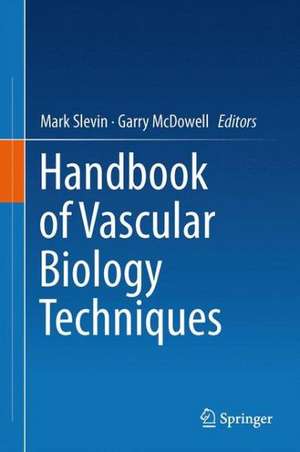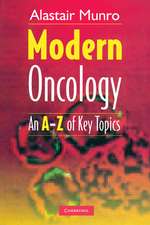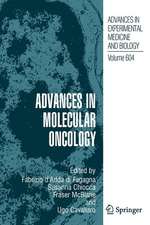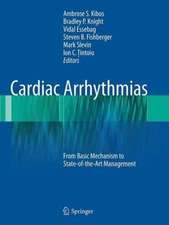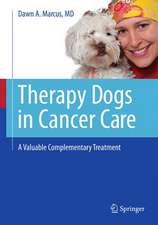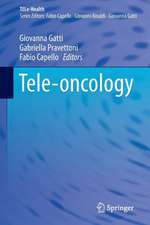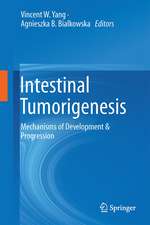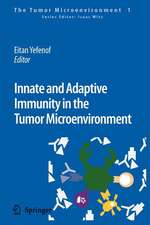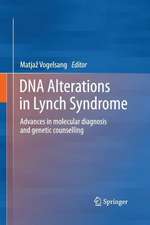Handbook of Vascular Biology Techniques
Editat de Mark Slevin, Garry McDowellen Limba Engleză Hardback – 8 apr 2015
Four sections explore in vitro techniques, in vivo and ex vivo manipulations, imaging and histological analysis and other novel techniques in vascular biology. Readers will discover basic methodologies used for analysis of endothelial cell growth in vitro, including co-culture models of vessel formation. Authors also explore isolation and purification of cells and methods for analysis of data and visualization of localized vasculature with modern imaging platforms. Both animal models and human disease are covered in this work.
Each chapter contains helpful sections on trouble shooting, additional notes and links, supporting the reader to carry out protocols. This book will appeal to students, researchers and medical professionals working in all vascular-linked fields such as cardio- and cerebrovascular, cancer and dementia.
Preț: 733.66 lei
Preț vechi: 772.26 lei
-5% Nou
Puncte Express: 1100
Preț estimativ în valută:
140.39€ • 150.12$ • 117.05£
140.39€ • 150.12$ • 117.05£
Carte tipărită la comandă
Livrare economică 17 aprilie-01 mai
Preluare comenzi: 021 569.72.76
Specificații
ISBN-13: 9789401797153
ISBN-10: 9401797153
Pagini: 492
Ilustrații: XII, 477 p. 191 illus., 126 illus. in color.
Dimensiuni: 155 x 235 x 32 mm
Greutate: 0.86 kg
Ediția:2015
Editura: SPRINGER NETHERLANDS
Colecția Springer
Locul publicării:Dordrecht, Netherlands
ISBN-10: 9401797153
Pagini: 492
Ilustrații: XII, 477 p. 191 illus., 126 illus. in color.
Dimensiuni: 155 x 235 x 32 mm
Greutate: 0.86 kg
Ediția:2015
Editura: SPRINGER NETHERLANDS
Colecția Springer
Locul publicării:Dordrecht, Netherlands
Public țintă
ResearchCuprins
Preface.- Section 1 In vitro techniques.- In vitro angiogenesis assay - endothelial migration, proliferation, and tube formation.- Endothelial cell tube formation on basement membrane to study cancer neoangiogenesis.- Induction of hypoxia in vascular endothelial cell culture.- Evaluating In Vitro Angiogenesis using Live Cell Imaging.- Isolation of Endothelial Progenitor Cells (EPCs).- Culture and Maintenance of Human Embryonic Stem Cells: A Potential Source for Vasculargenesis.- Assessment of vascular function and contractility, ex vivo.- Measurement of Aβ uptake by cerebrovascular smooth muscle cells.- Measurement of Intracellular Ca2+ in Human Endothelial cells.- Section 2 In vivo and ex vivo manipulations.- Evaluation of angiogenesis and arteriogenesis in a mouse model of prolonged cerebral hypoperfusion.- Sponge implant model of inflammatory angiogenesis.- The chick embryo chorioallantoic membrane assay.- Dorsal air sac assay.- Scanning Electron Microscopy of Blood Vascular Corrosion Casts (SEM on VCC) in mammals.- Hypoxia-induced retinal angiogenesis in adult zebrafish.- Angiogenesis in regenerating adult zebrafish tail fin.- Methods for studying developmental angiogenesis in zebrafish.- Isolation and Expansion of Brain Microvascular Endothelial Cells.- Section 3 Imaging and histological analysis.- Adipose angiogenesis.- Assessing tumor angiogenesis in histological samples.- Whole-mount immunostaining methods to study the blood and lymphatic vasculature in the embryonic mouse skin and adult mouse cornea.- Computed Tomography Angiography: Fundamental techniques and data interpretation.- Magnetic Resonance Angiography: Fundamental Techniques and Data Interpretation.- Single-Photon Emission Tomography of the brain in vascular pathology.- Section 4 Miscellaneous novel techniques in vascular biology.- Enhancing Endothelialisation of Artificial/Engineered Blood Vessels Using Structural Cues.- Preparation of liposomes withdual fluorophores to follow real-time content release in vivo.- Vascular Flow Modelling using Computational Fluid Dynamics.- Reverse Transcription Real-Time PCR Protocol for gene expression analyses.- Oscillations, Feedback and Bifurcations in Mathematical Models of Angiogenesis and Haematopoiesis.- Genomic microarray analysis.- Selection of appropriate housekeeping genes for quality control.- Endothelial transcriptomic analysis.- Protocol for Multiplex Amplicon Sequencing using Barcoded Primers.- Flow cytometry Enumeration of Hematopoietic & Progenitor Stem Cells: Identification and Quantification.- A Scheme for the Development and Validation of Enzyme Linked Immunosorbent Assays (ELISA) for Measurement of Angiogenic Biomarkers in Human Blood.- Analysis of Phosphorylated Protein Kinases in Endothelial cells by Flow Cytometry.
Textul de pe ultima copertă
A wide range of research methods for the study of vascular development, from basic laboratory protocols to advanced technologies used in clinical practice, are covered in this work. A range of methodologies such as molecular imaging platforms and signalling analysis, along with tumour models are collated here.
Four sections explore in vitro techniques, in vivo and ex vivo manipulations, imaging and histological analysis and other novel techniques in vascular biology. Readers will discover basic methodologies used for analysis of endothelial cell growth in vitro, including co-culture models of vessel formation. Authors also explore isolation and purification of cells and methods for analysis of data and visualization of localized vasculature with modern imaging platforms. Both animal models and human disease are covered in this work.
Each chapter contains helpful sections on trouble shooting, additional notes and links, supporting the reader to carry out protocols. This book will appeal to students, researchers and medical professionals working in all vascular-linked fields such as cardio- and cerebro-vascular, cancer and dementia.
Four sections explore in vitro techniques, in vivo and ex vivo manipulations, imaging and histological analysis and other novel techniques in vascular biology. Readers will discover basic methodologies used for analysis of endothelial cell growth in vitro, including co-culture models of vessel formation. Authors also explore isolation and purification of cells and methods for analysis of data and visualization of localized vasculature with modern imaging platforms. Both animal models and human disease are covered in this work.
Each chapter contains helpful sections on trouble shooting, additional notes and links, supporting the reader to carry out protocols. This book will appeal to students, researchers and medical professionals working in all vascular-linked fields such as cardio- and cerebro-vascular, cancer and dementia.
Caracteristici
Enablers researchers to employ all research techniques in vascular biology Guides the reader step-by-step, through current and experimental protocols Includes numerous explanatory and supportive diagrams Includes supplementary material: sn.pub/extras
